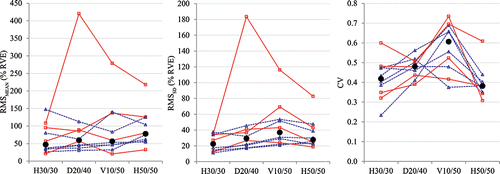Figures & data
FIGURE 1 Participant performing the four experimental conditions A: H30/30, B: D20/40, C: V10/50, and D: H50/50.
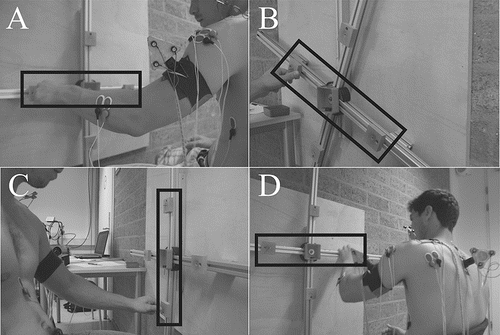
FIGURE 2 An example illustrating the standard, adjustment, and steady state phases of the 60-minute pick-and-place task protocol.
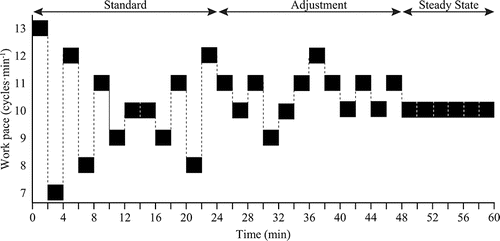
FIGURE 3 Upper arm elevation variables for the four workstation designs at the standard pace: angleMEAN (left), angleSD (middle), and RoM (right). Lines show individual results for females (n = 5, red squares, solid lines) and males (n = 7, blue triangles, dashed lines); median values across all participants are marked by black circles.

TABLE 1 Median kinematic (n = 12) and EMG (n = 13) variables during the standard pace, with p-values obtained from the Friedman tests and from the post-hoc univariate Wilcoxon signed-rank tests.
TABLE 2 Median MAWP and MTM pace for each workstation design, and ratings of perceived exertion (RPE; Borg CR-10) directly after the steady state phase, with p-values obtained from the Friedman test and from the post-hoc univariate Wilcoxon signed-rank tests.
FIGURE 4 Cumulative probability distribution of the maximal acceptable work pace for the four workstation designs.
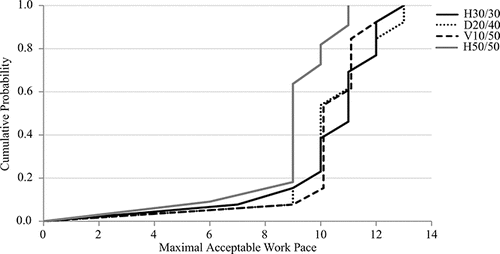
FIGURE 5 Upper arm elevation variables for the four workstation designs at the MAWP: angleMEAN (left), angleSD (middle), and RoM (right). Lines show individual results for females (n = 4, red squares, solid lines) and males (n = 6, blue triangles, dashed lines); median values across all participants are marked by black circles.
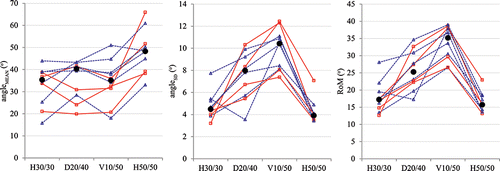
TABLE 3 Median kinematic (n = 12, excepting n = 10 for H50/50) and EMG (n = 13, excepting n = 10 for H50/50) variables during the MAWP with p-values obtained from the Friedman's test and from the post-hoc univariate Wilcoxon signed-rank tests.
FIGURE 6 EMG variables for the dominant upper trapezius muscle in the four workstation designs at the MAWP: RMSMEAN (left), RMSSD (middle), and CV (right). Lines show individual results for females (n = 4, red squares, solid lines) and males (n = 6, blue triangles, dashed lines); median values across all participants are marked by black circles.
